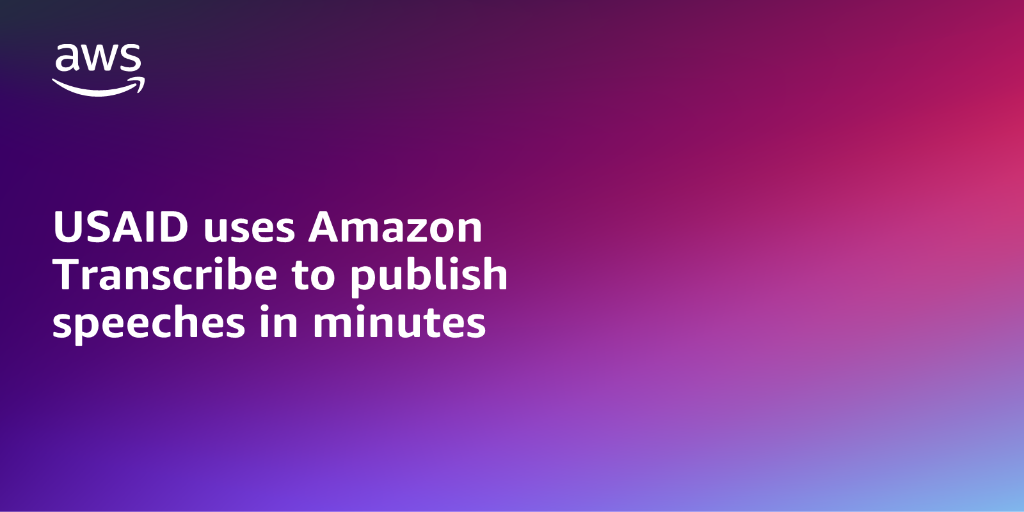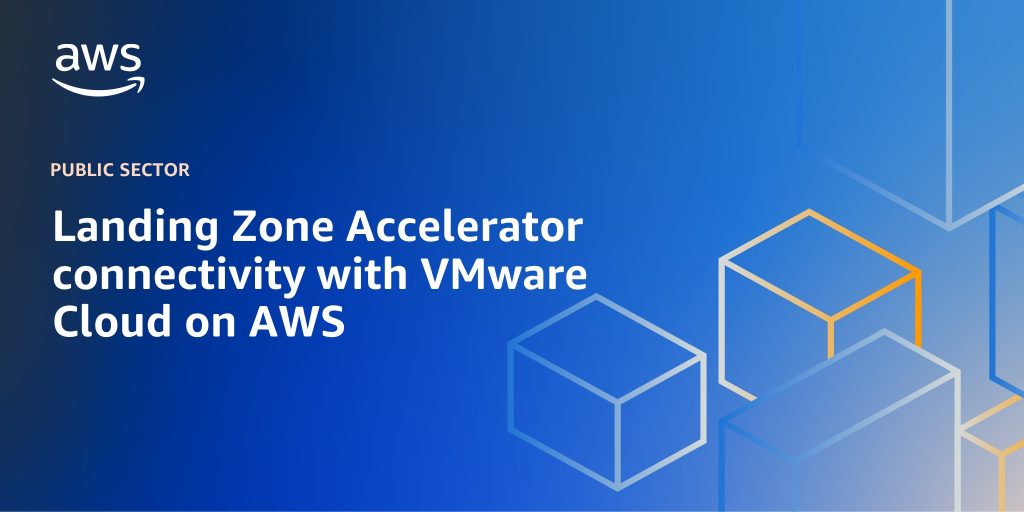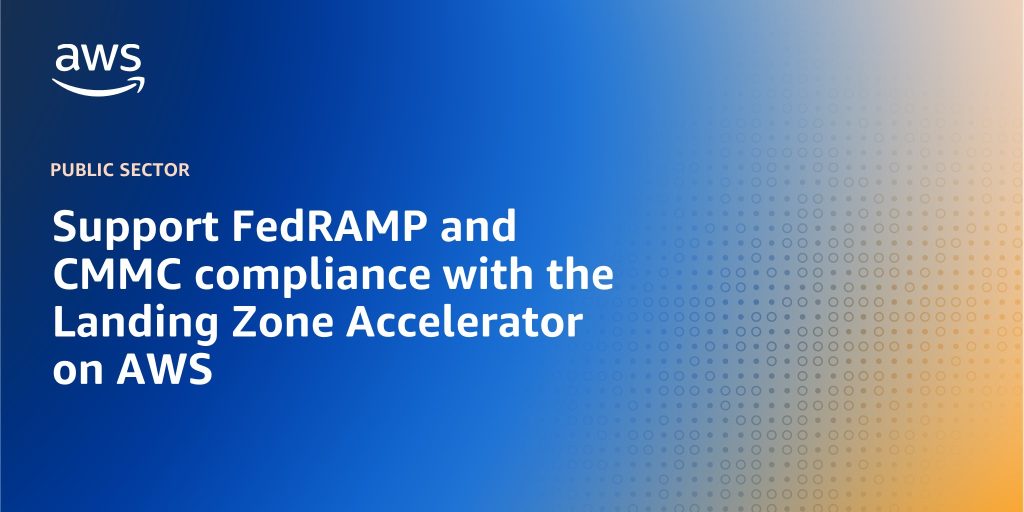AWS Public Sector Blog
Category: Federal
How the Landing Zone Accelerator on AWS supports NCSC cloud security guidance
Amazon Web Services (AWS) has collaborated with the UK National Cyber Security Centre (NCSC) to tailor advice on how UK public sector customers can use the Landing Zone Accelerator on AWS (LZA) to meet the NCSC’s guidance on “using cloud services securely.” Read this blog post to learn how the LZA on AWS can support each recommended action in the NCSC’s guidance.
Aligning the Landing Zone Accelerator on AWS with UK National Cyber Security Centre guidance
This blog post provides technical guidance for UK organisations to implement their landing zone in-line with guidance from the UK National Cyber Security Centre (NCSC) using the LZA.
USAID uses Amazon Transcribe to publish speeches in minutes
After migrating to the cloud, USAID knew it could streamline its transcription process of its leader’s public remarks with cloud technology. Read this blog to learn how USAID created a solution with Amazon Transcribe, an artificial intelligence (AI)-powered service from Amazon Web Services (AWS), in collaboration with AWS Partner CloudShape that helps the agency transcribe and publish remarks in minutes.
Establishing hybrid connectivity within a Canadian Centre for Cyber Security Medium Cloud reference architecture
In this blog post, learn how to establish best-practice hybrid connectivity within a Canadian Centre for Cyber Security (CCCS) Medium Cloud reference architecture. Amazon Web Services consulted with the CCCS, the Treasury Board of Canada Secretariat (TBS) and Shared Services Canada (SSC) to build the CCCS Medium Cloud Reference Architecture. This opinionated and prescriptive architecture can help reduce the time and effort required to implement CCCS Cloud Medium controls from 90+ days to 2 days.
Landing Zone Accelerator connectivity with VMware Cloud on AWS
The Landing Zone Accelerator on AWS (LZA) solution deploys a cloud foundation that is architected to align with AWS best practices and multiple global compliance frameworks. Customers with highly-regulated workloads and complex compliance requirements can use the LZA to better manage and govern their multi-account environment. Some of these same customers are also using VMware Cloud on AWS to integrate on-premises vSphere environments, allowing them to move existing workloads to the cloud more quickly. In this blog post, explore the technical considerations related to integrating your LZA landing zone with your VMware Cloud on the AWS environment.
Migrate and modernize public sector applications using containers and serverless
Many public sector customers are interested in building secure, cost-effective, reliable, and highly performant applications. Technologies like containerization and serverless help customers migrate and modernize their applications. In this blog post, learn how public sector customers use offerings from AWS like AWS Lambda, Amazon Elastic Kubernetes Service (Amazon EKS), Amazon Elastic Container Service (Amazon ECS) to build modern applications supporting diverse use cases, including those driven by machine learning (ML) and generative artificial intelligence (AI). If you want to learn more on this topic, please register to attend the webinar series, Build Modern Applications on AWS.
Using AWS Verified Access and SD-WAN to streamline and secure remote application access for federal employees
Learn how traditional connectivity methods affect the agency employee experience while accessing applications. Then, discover how AWS Verified Access from AWS and software-defined wide-area network (SD-WAN) can improve the employee experience while accessing enterprise applications while maintaining reliability and security.
Support FedRAMP and CMMC compliance with the Landing Zone Accelerator on AWS
Some US federal agencies and those who collaborate with them must support an automated, secure, and scalable multi-account cloud environment that meets Federal Risk and Authorization Management Program (FedRAMP) and Cybersecurity Maturity Model Certification (CMMC) standards. To support these needs, AWS customers and partners can deploy the Landing Zone Accelerator (LZA) on AWS. Recently, AWS worked with Coalfire, a FedRAMP-approved third-party assessment organization (3PAO) and AWS Partner, to assess and verify the LZA solution.
Scaling intelligent document processing workflows with AWS AI services
As the daily volumes of document submissions increases for government organizations, intelligent document processing (IDP) solution architectures must absorb spikes in requests without creating delays or other impact for the users. In cases where the processing volume exceeds the limits of the resources available in an AWS Region, organizations can distribute the workloads across multiple regions to increase the document processing throughput. This post presents high-level architecture guidance built around Amazon Comprehend to create a distributed document processing workload that can overcome the challenges of unpredictable request patterns.
Raising the bar on accessibility for open-source public sector solutions
Performance Dashboard on AWS is an open source solution in the AWS Solutions Library designed by AWS experts to help organizations build, deploy, and maintain customizable dashboards to communicate the data-driven performance of public sector services. After this initial release, the Government Transformation Team (GTT) at AWS enlisted the help of the UK’s Digital Accessibility Centre (DAC), LevelAccess, and an internal AWS accessibility team to conduct accessibility audits to help our product team identify possible accessibility opportunities within the application.









